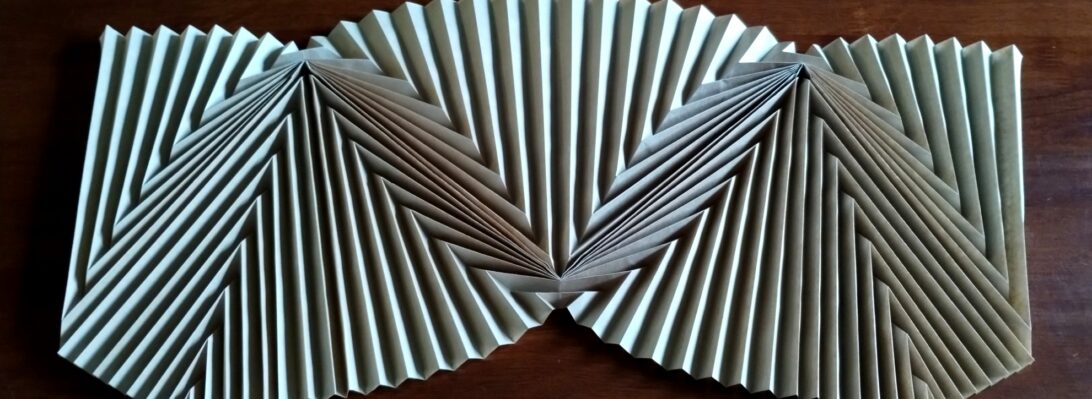I have been sitting on this model for ages, trying to nut it out because although the module is relatively easy to fold, the proportions and construction of this modular ball is torturous to be polite:

I settled on a 6:11 rectangle for my module, and folded 33 of them (3 as a test), then began the task of working out how this works.

Each point is made of 3 modules, the final lock is REALLY hard for each vertex, then they twist and turn behind the 3 adjacent modules to have their spare ends pop up as one of 3 to make new points. I put together and disassembled a dozen times until I found the right order/morphology.
The result is not as tidy as I would like, and I may re-try it with a different proportion rectangle to screw further with the vertex shape, but I am pretty chuffed to have finally got it together – it was a real wrestle.
Continue reading



















